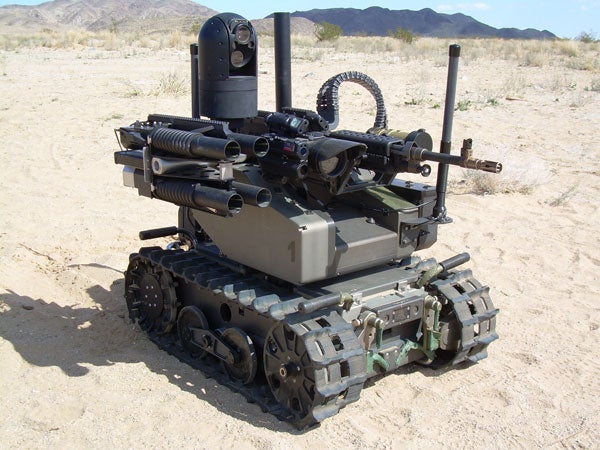Robots May Replace One-Fourth Of U.S. Combat Soldiers By 2030, Says General
Be all the cyberman you can be.

By the middle of this century, U.S. Army soldiers may well be fighting alongside robotic squadmates. General Robert Cone revealed the news at an Army Aviation symposium last week, noting that the Army is considering reducing the size of a Brigade Combat Team from 4,000 soldiers to 3,000, with robots and drones making up for the lost firepower. Cone is in charge of U.S. Army Training and Doctrine Command (TRADOC), the part of the Army responsible for future planning and organization. If the Army can still be as effective with fewer people to a unit, TRADOC will figure out what technology is needed to make that happen.
While not explicitly stated, a major motivation behind replacing humans with robots is that humans are expensive. Training, feeding, and supplying them while at war is pricey, and after the soldiers leave the service, there’s a lifetime of medical care to cover. In 2012, benefits for serving and retired members of the military comprised one-quarter of the Pentagon’s budget request.
To understand what Cone is proposing (besides robot soldiers), we need to understand two fundamental building blocks of the modern U.S. Army. The first is the nine-man squad, almost the smallest useful unit of force. For some purposes, it can be split into two smaller fireteams, but the Army designs vehicles with the nine-man squad in mind, and then writes doctrine for how these squads (some with, some without vehicles) will move and fight.
The second building block worth knowing is the Brigade Combat Team. It’s the smallest large unit that can be sent into combat independently. If the Army can reduce number of people in squads, it can reduce the total manpower everywhere, and it can acquire vehicles that are both smaller and cheaper. In order to reduce manpower without reducing fighting ability, the Army will need to make sure that Brigades have everything they need to be just effective. In order for that to happen, Cone said the Army will “need to fundamentally change the nature of the force, and that would require a breakthrough in science and technology.” Cone expects this to happen by 2030 to 2040.

A Pair Of Robots On A Stroll
This is a huge change under consideration, but the Army already has some robot warriors on hand. In October, the Army tested multiple remote-controlled gun-firing robots. Bomb squad robots were used Iraq and Afghanistan to dispose of IEDS. BigDog, a robotic pack mule now owned by Google, received funds from DARPA for further development. The RQ-11 Raven drone is a remote-controlled scout, tossed into the air like a javelin, that streams video back to soldiers, letting them know what’s lurking behind the next hill.
Moving from the adoption of new technologies to actually making doctrine that relies on the new technology would be a huge step for the military. Cone’s comments suggest that the military is at least willing to consider a day when soldier and robot will fight alongside one another.
